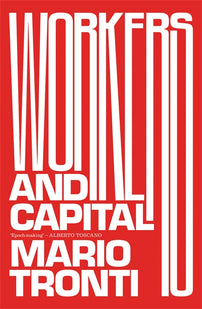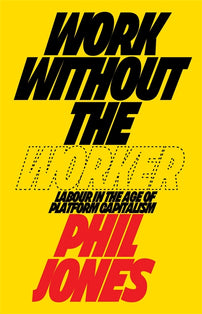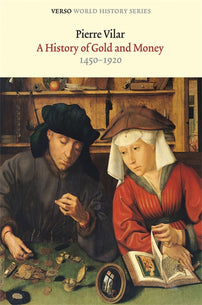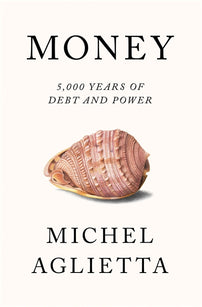Cat and Mouse: The Copernican Inversion Outside Work
The history of monetary scams – from the coin clipping shown in the recent BBC drama The Gallow’s Pole, to the Spanish Anarchist and bricklayer who forged millions of travellers cheques in the 1960s and 1970s – shows how workers' resistance is still key to capitalist development.

The translation into English of Mario Tronti’s Workers and Capital in 2019 re-energised a network of Anglo-speaking activists for whom the insights, methodology and strategies of Italy’s historic Operaisti inspired both debate and activity.
The primary theoretical innovation of Workers and Capital is the ‘Copernican inversion’ – a framework to explain the role that workplace struggle plays in the restructuring and reordering of the production process. Tactics developed by workers, the thesis goes, are often circumvented by the introduction of new technologies or the implementation of new work regimes that re-order the production process. In essence, our resistance as workers against capitalist production is often the motor driving forward the capitalist classes’ technological innovations.
For Tronti, the inversion worked something like this: highly skilled engineers, say, installing gear systems in automobiles decide to strike for better pay at the factory where they are employed. This action grinds production to a halt; only the workers on strike know how to install the gears correctly. Accordingly, their strike is successful and management cave into their demands. To overcome the power that these workers wield over production, management decides to reorder it, introducing a Fordist assembly line that transforms the ‘technical composition’ of the factory's workforce. Now, instead of a small group of highly skilled engineers installing the gear systems, the work is split across a larger group whose tasks require less skill and expertise, each of whom is responsible for only a single element of the job (e.g., tightening a particular bolt), with none knowing how it all fits together. Now, if the workers strike, they are much more easily replaced: in effect the workers' power that was drawn from their technical arrangement in work is ‘decomposed’ through the work’s restructuring. With these changes now incorporated into the flow of work, workers need to establish new ways to exert their autonomy over production and to ‘recompose’ their power.
[book-strip index="1"]
This formula of class decomposition and recomposition would reposition the role of technology in relationship to class development. In traditional Marxism, the means of production was long understood to be neutral in its character. As such, the primary concern for socialists was to seize production and establish workers’ control. However, research conducted by the Operaisti in an Olivetti factory concluded something different: namely, that the division of labour and the division of skill were processes of workers’ domination, not mere technical matters. The factory was not a neutral site. Moments of reorganisation within the production process were then conceived as disciplinary affairs, thus showing the radical limitation of the traditional concept of ‘workers’ self-management’, now repositioned as ‘the self-management of one’s own domination’. [1]
For Tronti, the only possibility of exiting the ‘compositional cycle’ lay in the structural imbalances of the forces who compose class society. For while capitalists cannot function without labour power, labour does not need capital to reproduce.
Laying the Copernican inversion over historic instances of factory struggle, we can see Tronti’s formula neatly (perhaps too neatly) capturing the dynamics at play, exposing the possibilities and the limitations placed on workers in their struggle for autonomy over, or through, production. However, in post-industrial economies, and after the collapse of the ‘mass’ factory subject, the Copernican inversion has become a lot harder to spot, leaving some to question the primacy Tronti placed on workplace struggle in dictating capitalism’s technological innovation. But maybe we’ve been looking in the wrong place.
***
As noted by the historian E.P Thompson, the rise of capitalism was as much a struggle to remove the ‘commoning customs’ of pre-industrial labourers as it was a struggle to impose new modes of production and a new moral order. Britain's rural labourers traditionally utilised woodland and meadows as common resources through which wild foods and fuel were gathered and on which livestock was grazed. Access to these resources provided the early working class with a modicum of autonomy outside of the wage system. Yet the development of industrialisation and the acts of enclosure that came with it, eventually saw the land cordoned off by private buyers and a mass movement of labourers flood into cities and towns in search of industrial work.
This process was not without resistance. Shane Meadows’s recent BBC drama, The Gallow’s Pole, inspired by Benjamin Myers’ novel of the same name, follows the story of the Cragg Vale Coiners (or the Yorkshire Coiners), a criminal gang of forgers led by ‘King’ David Hartley, who created a village-wide conspiracy to clip and forge coins as a way to resist enclosure and industrialisation. Obtaining coins from bent officials and local aristocrats, the gang would trim the edges off and melt the shavings into new coins, using a stamp to mimic their designs. The original coins’ edges would then be filed to hide the damage, and the coins (including the new counterfeit ones), would be re-entered into circulation.
It’s time to split the coins proper and make the money that’s ours. It’s time to clip a coin and fuck the crown. It’s time to let the bastards know that the only law is our law.[2]
This enterprise allowed the inhabitants of the Calder Valley – who had experienced severe deprivation due to the decline of the weaving industry – to live in a state of relative abundance during the 1760s. It is estimated that by the end of that decade, £3.5m (£515m in today's money) of forged coins had been paid into the Bank of England, devaluing the pound by 9%, before the gang’s central figures were caught by the state and hung for treason.[3]
Coin clipping was not a new venture by this point. In fact, in 1696, coins in circulation in Britain were so worn from generations of wear, tear and clipping that King William III embarked on ‘the great recoinage’, putting parliament in control of Britain’s monetary policy and founding the Bank of England. With assurances that their coins would be replaced at face value, the public was told to hand in their hammered coins to be replaced with new coins made by machinery, with grained or lettered edges – ones that would make clipping and forgery much easier to detect.[4] While this did improve the state of coins in circulation, and it did limit clipping, they were still made of silver, and occasionally gold, soft metals prone to wear that still made clipping possible.
One can hardly imagine such a significant criminal enterprise taking place today. Developments in the money-form – aided by the state’s surveillance – make the process of forging currency far more difficult, let alone doing so for long enough to tank the British economy as the Cragg Vale Coiners once did. Of course, high value coinage was eventually replaced by bank notes, which are now furnished with security threads, serial numbers, and raised printing, all making forgery more difficult and much easier to detect.
So, while the Cragg Vale Coiners were able to circulate huge quantities of counterfeit coins, in 2022 just £4.4 million in fake notes were taken out of circulation – 0.8% of that of the Cragg Vale coiners, itself only the efforts of a single Yorkshire village’s clipping ventures.
***
After a short dalliance with forged US dollars, Lucio Urtubia, a Spanish Anarchist and bricklayer who caried out bank robberies and forgeries throughout the 1960s and 70s, moved on to traveller’s cheques – a transnational money-form that could be exchanged in banks and shops across the world. While forging money itself was a crime against the state, carrying with it punitive sentences, Urtubia reasoned that forging traveller’s cheques was a crime against a corporation and thus would likely see less prison time in the event of capture – and crucially, scope for negotiation.
In 1977, Urtubia successfully forged and circulated 20 million dollars of travellers cheques from First National City Bank in the US, with the goal of funding urban guerrilla groups in Europe and Latin America, and bringing the bank to its knees in the process.[5] Yet, once caught, Urtubia was not sentenced to prison time. Instead, he was able to negotiate a multi-million-dollar settlement from the bank in exchange for the promise that he would personally destroy the printing plates he had created, and that forged cheques would finally be removed from circulation. Recognising that this was the only way to halt the forgery, the bank agreed.
[book-strip index="2"]
In the years after Urtubia’s action, banks started to look for alternatives to traveller’s cheques, and by the mid 1980s they were phased out and replaced by credit cards and ATMs. At first a pioneering innovation, traveller’s cheques were in circulation for little longer than a decade before being phased out – in large part, no doubt, as a response to the risk of forgery they carried with them.
The advance toward a cashless society, facilitated by credit cards and, more recently, integrated online banking and phone payments, holds obvious benefits for those who own these systems, generating a succession of secondary industries predicated on exploiting the data our transactions generate. A detailed map of our daily spending provides private companies with the tools for both targeted marketing and ‘loyalty’ schemes, while giving security services and other governmental departments accurate intelligence regarding our interests, our whereabouts, and how we earn our livings. Coupled with increasing surveillance across society, it’s not hard to imagine how these technologies could be further weaponised to instil discipline and maintain authoritarian regimes.
However, in the informal economy, cash is, for the time being, still king. Calls to resist the transition to a cashless society have long been written off as the ramblings of conspiracy theorists like Piers Corbyn. But such concerns clearly have a material basis – if poorly one that is articulated. Through a redress of the Copernican inversion however, we can see evolutions in the money-form as responses to the ingenuity of our class in our struggle to build our own autonomy away from the discipline of capitalist work.
Similarly, in the present day, we have seen more people turn to shoplifting in response to the cost-of-living crisis, soaring inflation, and wages woefully failing to keep up with rising costs. In tandem, we have also seen supermarkets deploy new interventions to curtail theft. Facewatch – software ‘trained on millions of pictures and videos, [reads] the biometric information of a face as the person walks into a shop and checks it against a database of flagged people’ – now operates in almost 400 stores across Britain.[6] Tesco customers are among the most recent shoppers forced to show their receipt before leaving the store, alongside Sainsburys and Aldi.[7] Once again, we see resistance to capitalism as the driving force for disciplinary technological innovations, aimed squarely at decomposing our autonomy to act independently of the capital relation.
How we recompose our collective power in response to increasing surveillance and control -both in and outside the workplace – remains unwritten. What is for certain, however, is this game of cat and mouse – the cycle of decomposition and recomposition – can only be exited with redress to the uneven balance of the class forces that compose society.
For while the capitalist class needs us, we don’t need them.
Jamila Squire is an organiser with TWT, and a writer and researcher with Pagliacci Rossi.
Seth Wheeler is an writer, researcher and activist, with a background in the extra-parliamentary & anti-authoritarian communist movement.
_____
[1] Wright, Steve. Storming Heaven, 2017 (Pluto Press) pp. 41-46.
[2] The Gallows Pole, Benjamin Myers, Bloomsbury Publishing, 2017.
[3] https://www.examinerlive.co.uk/news/history/true-story-cragg-vale-coiners-20638589
[4] https://britanniacoincompany.com/blog/coin-clipping-the-great-recoinage-of-1696/
[5] https://libcom.org/article/lucio-urtubia-jimenez-legendary-life
[6] https://www.nytimes.com/2023/06/28/technology/facial-recognition-shoplifters-britain.html#:~:text=Trained%20on%20millions%20of%20pictures,of%20shoplifters%20and%20problematic%20customers.
[7] https://www.lbc.co.uk/news/tesco-shoppers-forced-show-receipt-stop-shoplifting/




